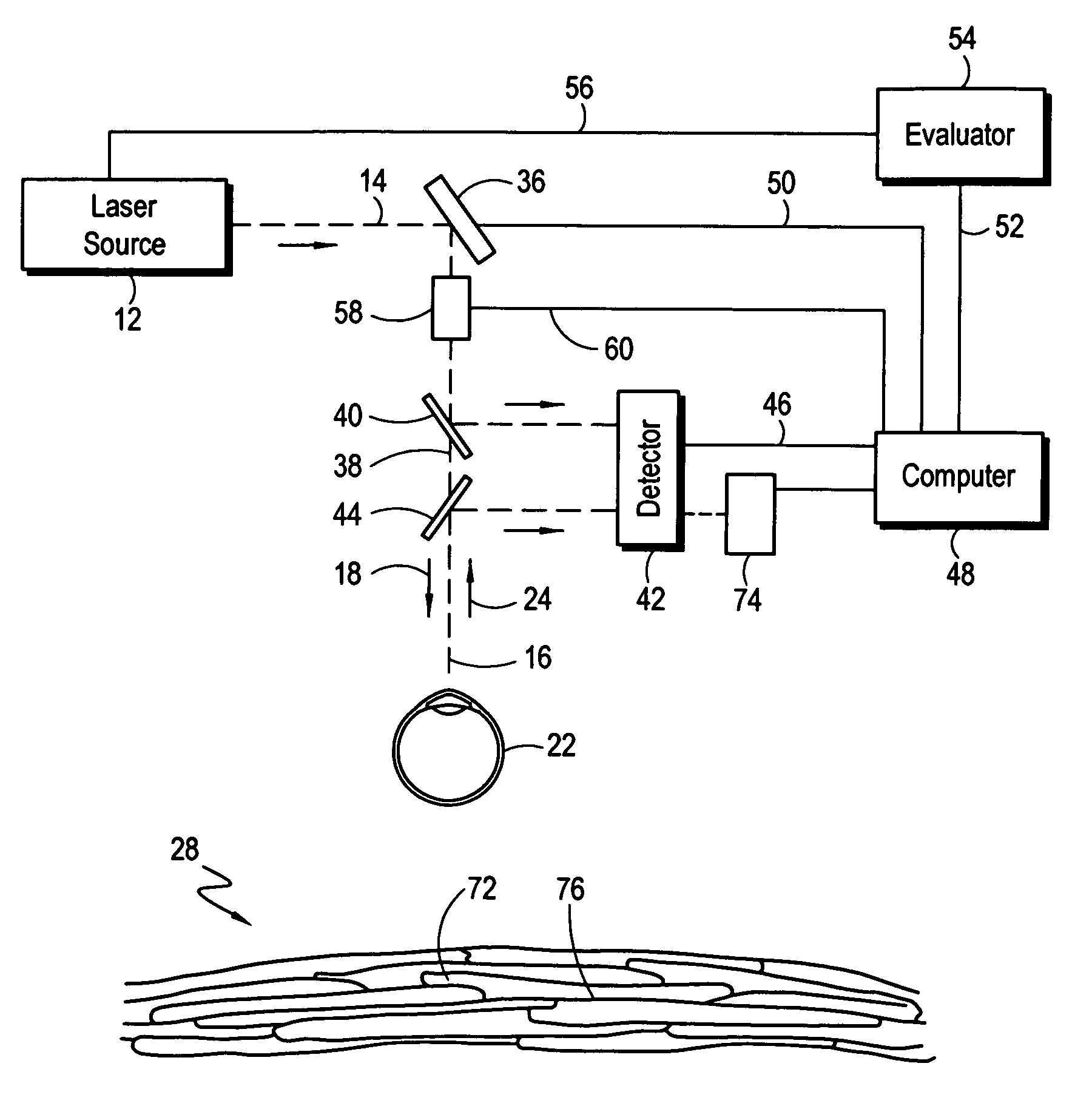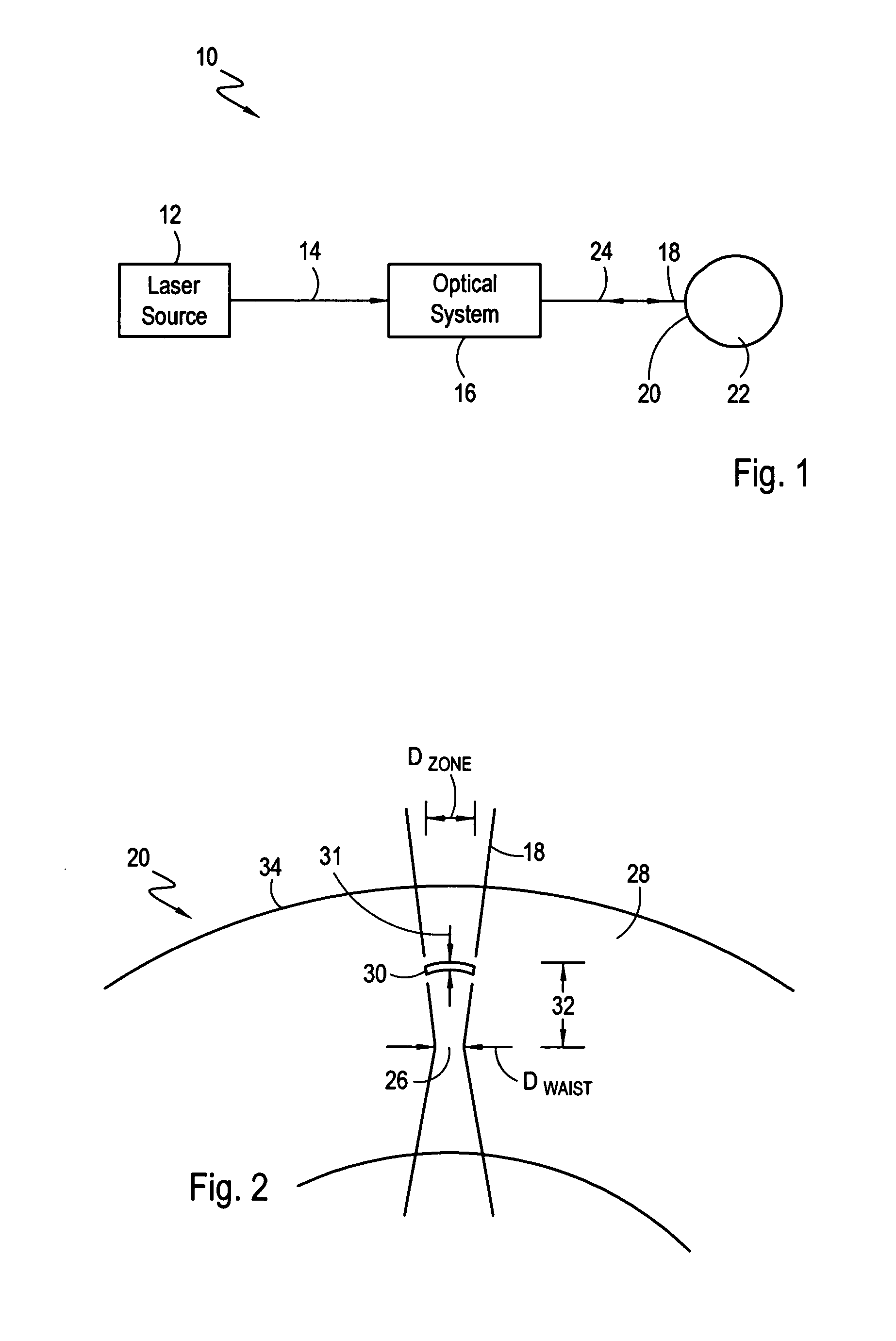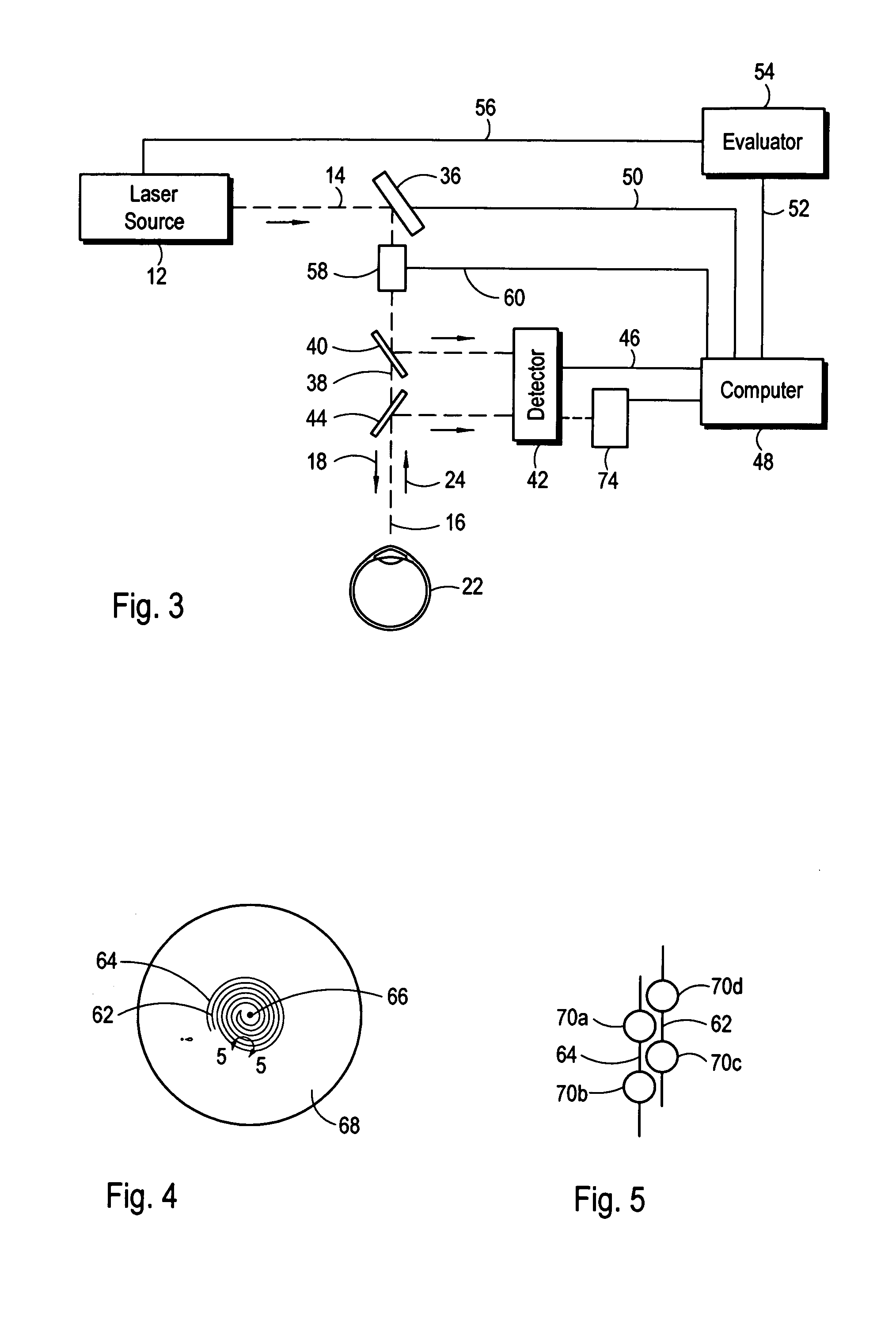Method and apparatus for intrastromal refractive surgery
a refractive surgery and intrastromal technology, applied in the field of ophthalmic laser surgery procedures, can solve the problems of requiring an undesirably long scan time, affecting the healing effect of the eye, so as to minimize heat damage to non-target stromal tissue, and reduce the risk of infection.
- Summary
- Abstract
- Description
- Claims
- Application Information
AI Technical Summary
Benefits of technology
Problems solved by technology
Method used
Image
Examples
Embodiment Construction
[0027]Referring initially to FIG. 1, an apparatus for intrastromal refractive surgery is shown schematically and is generally designated 10. As shown, the apparatus 10 includes a laser source 12 which, preferably, is capable of generating and controlling a source beam 14 having a continuous train of laser pulses of substantially constant pulse duration and pulse energy. In one embodiment of the apparatus 10, a source beam 14 having a pulse duration of approximately 600 fs and pulse energy of approximately 6 μJ is generated by the laser source 12.
[0028]Continuing with FIG. 1, it can be seen that the apparatus 10 further includes an optical system 16 for forming a shaped laser beam 18 and directing the shaped laser beam 18 toward and into the cornea 20 of an eye 22. Also shown in FIG. 1, reflected light 24 from the eye 22 can be received by the optical system 16. As further detailed below, analysis of the reflected light 24 is useful for several reasons including, but not limited to, ...
PUM
 Login to View More
Login to View More Abstract
Description
Claims
Application Information
 Login to View More
Login to View More - R&D
- Intellectual Property
- Life Sciences
- Materials
- Tech Scout
- Unparalleled Data Quality
- Higher Quality Content
- 60% Fewer Hallucinations
Browse by: Latest US Patents, China's latest patents, Technical Efficacy Thesaurus, Application Domain, Technology Topic, Popular Technical Reports.
© 2025 PatSnap. All rights reserved.Legal|Privacy policy|Modern Slavery Act Transparency Statement|Sitemap|About US| Contact US: help@patsnap.com



